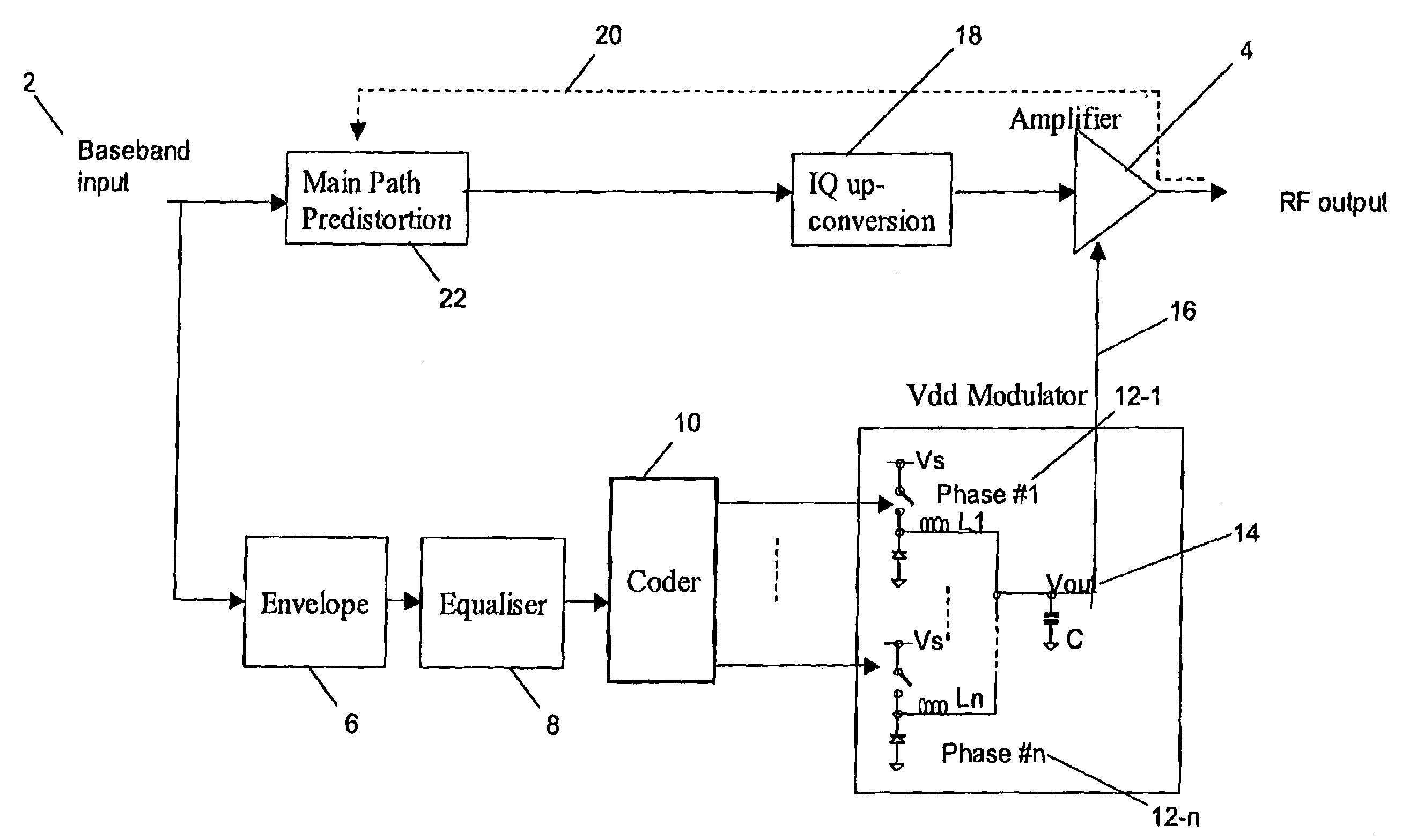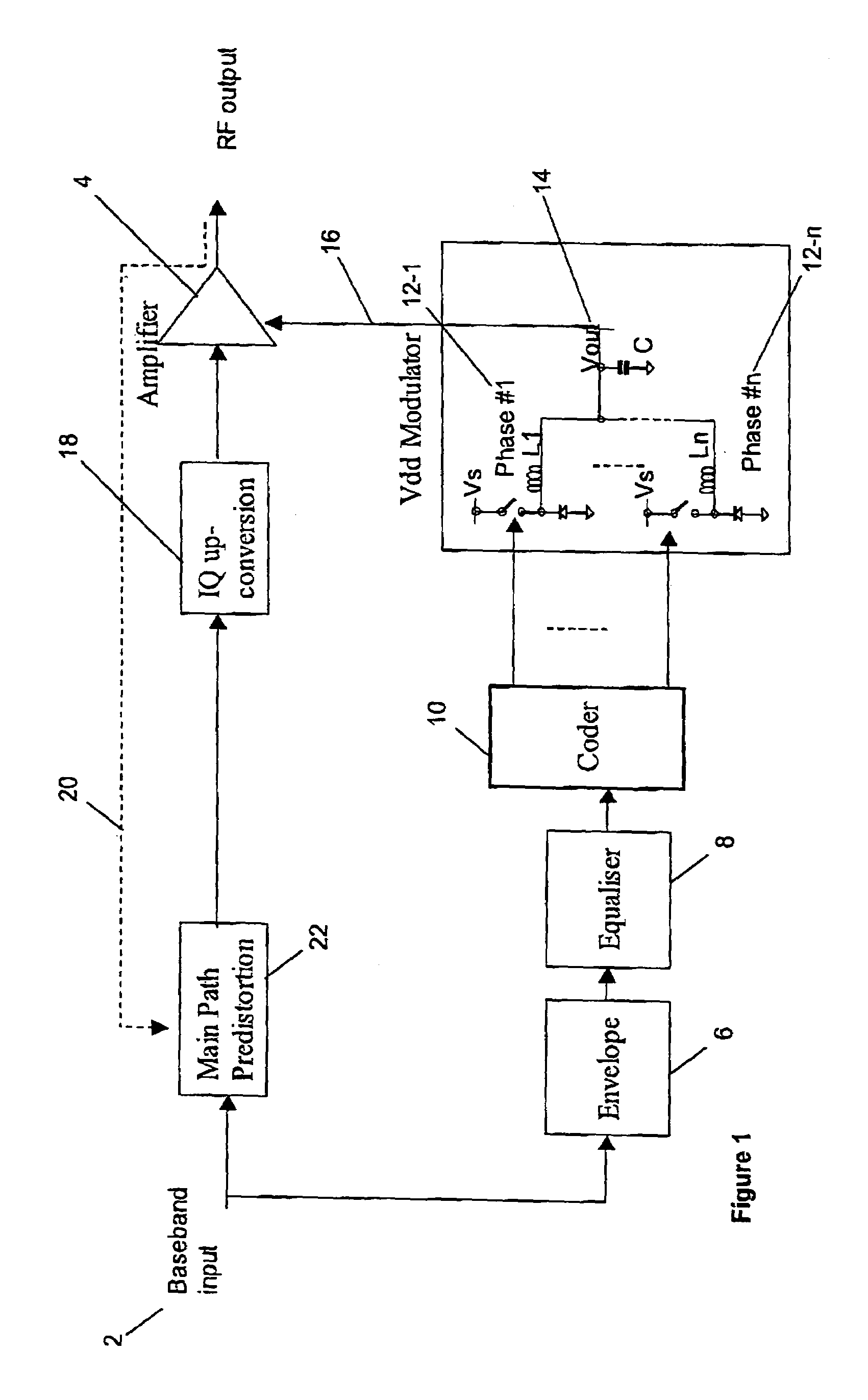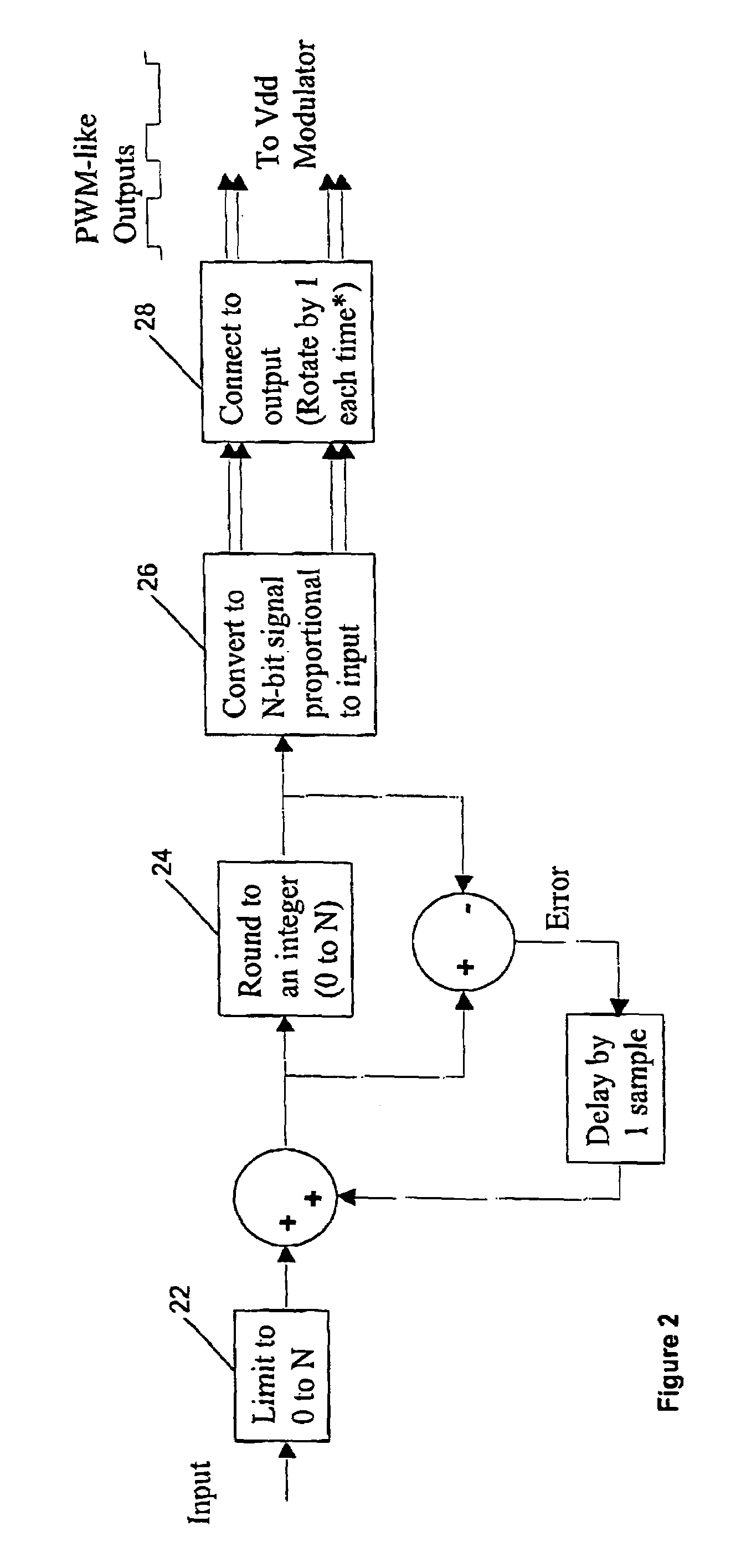Methods and apparatus for controlling the output voltage of a switched-mode power supply
- Summary
- Abstract
- Description
- Claims
- Application Information
AI Technical Summary
Benefits of technology
Problems solved by technology
Method used
Image
Examples
Embodiment Construction
[0024]With reference to FIG. 1, a baseband input 2 receives a signal to be amplified by an RF amplifier 4. The signal typically would be a broadcast signal, for example, for a cellular base station. The baseband input is also fed to a filter 6 a which generates a signal representative of the of envelope of the baseband signal. This is equalised in equaliser 8 and then passed to a coder 10, which is described in more detail below.
[0025]The function of the coder 10 is to determine which of a plurality of switched mode power supply phases 12-1 to 12-n will be activated, summed by a summer 14, filtered and fed as a modulated power supply voltage 16 to the amplifier 4.
[0026]As is known in the art, the baseband input is passed through an IQ upconverter 18 and predistortion 20 is applied via a main path predistorter 22 in order to counteract distortions introduced by the amplifier 4.
[0027]With reference to FIG. 2, the coder 10 is now described in more detail. The input to the coder 10 typi...
PUM
 Login to View More
Login to View More Abstract
Description
Claims
Application Information
 Login to View More
Login to View More - R&D
- Intellectual Property
- Life Sciences
- Materials
- Tech Scout
- Unparalleled Data Quality
- Higher Quality Content
- 60% Fewer Hallucinations
Browse by: Latest US Patents, China's latest patents, Technical Efficacy Thesaurus, Application Domain, Technology Topic, Popular Technical Reports.
© 2025 PatSnap. All rights reserved.Legal|Privacy policy|Modern Slavery Act Transparency Statement|Sitemap|About US| Contact US: help@patsnap.com



